The artist’s life
Hokusai was born to an artisan household in the Katsushika district of Edo, Japan, on the 23rd day of the ninth month of the 10th year of the Hreki era (October or November 1760). Katsushika Hokusai was a brilliant Ukiyo-e artist who is estimated to have created over 30,000 prints, drawings, and sketches throughout his lifetime (Maber 20). He started artistry at a young age and was mentored by a woodcarver as a teen. Aged eighteen, he was welcomed into the production company of Katsukawa Shunsho, a Ukiyo-e artist known for depicting the prosperous noble class, which included courtesans, sumo wrestlers, and Kabuki actors.
However, it was not until he was expelled from the Katsukawa School that he completely developed his trademark technique. Henceforth, his works were characterized by gorgeous ladies, landscapes, actor portraits, historical narratives, and legendary people. Nevertheless, they entailed birds, flowers, sketchbooks, life and nature, porn, surimono, illustrated poetry, albums, novels, and instructional painting guides. He was known as the ‘mad painter’ due to the fact that he had moved 95 times.
At the age of nineteen, he studied in the school of Katsukawa Shunsho, one of the finest woodblock artists of the period who specialized in portraits of prominent performers. He was renamed Shunro at this time, and he mostly worked on book covers and actor portraits under this moniker. However, Hokusai departed the Katsukawa School in 1792, after the death of Katsukawa Shunsho, the Katsukawa School’s headmaster establishment, as a result of a quarrel with the successor of the master, Shunko.
The departure led to Hokusai developing financial constraints and hence becoming poor. Despite his impoverishment, he maintained his education, focusing on the methods of the Tsutsumi Torin, Sumiyoshi Naiki schools, and Kano Yusen. He was especially fascinated by Western art that found its way into Japan through the Dutch commercial station in Nagasaki (Maber). He transformed his artistic name regularly during his career, more than thirty times. Around 1798, he concentrated on landscape painting, reportedly heavily influenced by engravings brought in by the Dutch. At this point, he bestowed the name Sori on his most promising student and adopted the moniker Hokusai for himself.
From 1823 through 1831, he worked on the ground-breaking woodblock print series The Thirty-six Views of Mount Fuji (even though there were 48 prints). These were regarded as classics in the history of Japanese landscape photography and typified this manner of portrayal. This series was completed during Hokusai’s 64th and. During this period, he created classics such as Chie no Umi (1826), Shokoku Taki Meguri (1883), Ryukyu Hakkei (1884), and (Eight Views of the Ryukyus, 1829) (Maber 20). Even at eighty, he remained actively making prints. “If Heaven grants me ten more years,” he murmured prior to dying on April 18, 1849, at 89. “Or perhaps even five more years,” he concluded, “I will undoubtedly be a genuine artist.” In this sense, Hokusai was an energetic artist; this is asserted by the fact that he started painting at an early age and did so until his dark days.
The main artistic movement to which the artist belonged
Katsushika Hokusai belonged to an artistic movement known as Impressionism. The group was a revolutionary art movement that emerged around the 1800s century (William 4). The Impressionists fought against traditional subject matter and embraced modernism, aiming to produce works that mirrored their environment. What brought them together was an emphasis on the way light can define a moment in time, with color giving definition rather than black lines. The Impressionists highlighted the importance of painting plain air or outdoors. Initially dismissed by critics, Impressionism has gained popularity and prominence as one of Western history’s most significant art movements. However, Katsushika Hokusai was not the group leader, and there was no clear forerunner of the organization during his time. Indeed, some of the most renowned western painters gathered his work, including Claude Monet, who acquired 23 of the artist’s prints. Hokusai’s influence can be seen in Édouard Manet, notably in his representations of ordinary life and ladies. Hokusai’s art impacted his style and topics. Camille Pissarro and Alfred Sisley, both Impressionist painters, were too affected by Hokusai’s work and Japanese art.
Impressionism came into being in the 1800s; however, it merged in the 1860s century when artists led by Claude Monet, Alfred Sisley, and Pierre-Auguste Renoir collaborated on “plein air” painting and lasted for about half a. John Rand, an American, never entered their ranks as a famous artist, but as a London-based painter, he invented a gadget that would change the art market in 1841: paint in a tube. His ingenious new method enabled painters to move their work outside by offering conveniently moveable, pre-mixed paint. Rand’s technical advance endowed Impressionists’ art with spontaneity and casual air. Other artists joined the practice over time, and their explorations shifted from inside studios to outside cafés, with frequent gatherings to discuss their ideas. Edouard Manet, a true painter, influenced personal friends of the Impressionists.
Moreover, the Impressionists admired Manet’s utilization of color, light, and fluidity in his brushstrokes. His 1863 artwork Le Dejeuner sur l’Herbe exemplifies all of them. The trend began in 1874 at Félix Nadar’s Paris photographic workshop. The Salon de Paris, organized by the Académie des Beaux-Arts from 1667, was replaced by this exposition. The Cooperative and Anonymous Association of Painters, Sculptors, and Engravers had 30 painters, including Monet, Renoir, Sisley, Paul Cézanne, Edgar Degas, and Camille Pissarro. The Impressionists were named after a slur shouted at a Monet picture, Impression, Sunrise. Critics slammed the show’s “unfinished” work, comparing it to wallpaper. Currently, many Impressionist works are not in French collections.
Pointillism, sometimes known as Neo-Impressionism, is a branch of Impressionism that began in 1886 with the exhibition of Georges Seurat’s work, which proclaimed the parent style out of date. Seurat’s technique is characterized by tiny spots of color that seem distinct up close but merge into a unified picture when the observer draws back. Together with painter Paul Signac, Seurat pioneered this technique. Camille Pissarro, a long-standing member of the group, subsequently allied himself with the Neo-Impressionists due to his preoccupation with optics, albeit the public did not welcome this well. His son Lucien was a member of the Neo-Impressionists for a more extended period, albeit he is not as well-known as his father.
Moreover, Paul Cézanne was on the periphery of the Impressionist movement. He was instrumental in the development of Post-Impressionism, which featured prominent artists such as Paul Gaugin, Henri de Toulouse-Lautrec, Edvard Munch, Gustav Klimt, and Vincent van Gogh. Never a cohesive movement, Post-Impressionism was more of an antidote to Impressionism, which is deemed overly confining. Post-Impressionists opted for a more symbolic and expressive perspective on their theme topic, particularly in their use of color, which was not essential to depict reality.
The artist’s work, subject matter, and style
Hokusai’s style evolved significantly over time and even within individual works. His paintings were less motivated and more rigorous than his sketches and woodblocks, but his prints also demonstrated a dramatic style shift. The much more exceptional discrepancy is between his earlier, extremely customary works created while operating in Shunsho’s studio. He learned the styles of the major Japanese schools of painting, such as Tosa, Kano, and Sotatsu-Korin, as well as Dutch engravings and Chinese painting (Maber 21). His daring experimentations with Western coloring and point of view in a collection of prints published in 1798 demonstrate the implication of Dutch illustrations and the work of Shiba Kokan (Jeanne). Other works, particularly his bird and flower paintings, reflect the Ming and Ch’ing periods’ influence on Chinese bird and flower paintings.
Hokusai painted everything from landscapes to still-life portraits, scenes from daily life, and sensual images. He is largely credited for pioneering the esthetic of Japanese woodblock prints among the Impressionists and his allusions to Chinese art and Japanese heritage. Some of his famous works that people should know include.
Ducks in a Stream
Hokusai-drawn Ducks in a Stream depicted two birds plunging into a stream in quest of food. One duck is portrayed just above the water in the middle of the vertical scroll, with a break and body visible when viewed. Another duck dives between the diagonal stripes representing the flowing water. The ducks are shown in great depth and color, but the stream is reduced to eight bands of grey, with shadows of weeds encircling the ducks and red maple petals floating on top, implying fall.
Hence Hokusai’s style is experimental, mixing the realistic handling of the birds with a metaphorical and minimalist portrayal of their watery surroundings. The varied washes of grey and the fluctuations in brightness and clarity reflect the depths and velocity of the water. The meaning of the work is somehow imprecise, as Hokusai appears to disregard the traditional affiliation of ducks with matrimonial faithfulness in favor of a direct portrayal of the natural world in which the birds allude to the seasonal change and passage of time, eliciting a sentimental reaction.
The waterfall in Ono on the Kisokai-road, A Tour of the Waterfalls of the Provinces
The waterfall in Ono on the Kisokai-road is one of a sequence of waterfalls. It depicts scenery with a towering waterfall and onlookers on a bridge. This picture exemplified the features of Japanese woodblock prints that captivated nineteenth-century Western audiences. For instance, the structured sprinkle and stripes of water falling and the jutting trees and buildings illustrate the Japanese aesthetic influences that revitalized the Impressionist movement.
The Dream of the Fisherman’s Wife
A lady is lying in this woodcut, her head thrown back toward the left side of the frame and her black hair pulled back as two octopi wrap her body. On the right side, the bigger octopus is seen doing cunnilingus, which involves wrapping tentacles all around the woman’s legs, chest, and arms, while the smaller octopus, near her face, touches her left nipple and mouth (Vesco). There seem to rock on each side of the group, and the area around the image is densely packed with text explaining a scenario in which an octopus tells a lady that he will be transporting her to an underwater castle.
Moreover, the artwork is a notably striking instance of the sensual subgenre called ‘shunga,’ which interprets roughly as ‘spring images’ and was particularly prevalent in the 19th century. The Dream of the Fisherman’s Wife has remained famous largely because of Hokusai’s ability to capture feminine ecstasy. The woman’s exposed body, drooping head, closed eyes, and wide lips recall her sensation of abandonment, sparking viewers’ flights of fancy. Hokusai was part of the impressionism movement, and it was the only organization he belonged to during his time.
A Specific Visual Analysis the artist’s works
Hokusai is generally regarded as among Japan’s best artists, with his advances in topic and structure modernizing conventional print traditions. Hence, delving deeper into one of his most outstanding works of all time, Thirty-Six Views of Mount Fuji. When the Mount Fuji collection debuted in 1831, it was the first big scenery sequence in the history of a Japanese print. The photos were immediately influential with the world, introducing fresh and fascinating images that have become icons of international art, including “Under the Wave Off Kanagawa,” also known as “The Great Wave,” and “South Wind, Clear Sky,” commonly known as “Red Fuji.” The pictorial series was a resounding achievement upon its first release, owing to enormous Japanese devotion to Mount Fuji as a holy destination of pilgrimage and devotion. The popularity of the paintings prompted Hokusai’s publisher to repeat the most popular patterns and extend the series by ten pieces, giving a total of 46.
The mountain was a perfect topic for Hokusai to pursue as a treasured backdrop to everyday life in the bustling metropolis of Edo. This site carried a feeling of natural force and spiritual importance. It allowed him to employ a career of creative ideas and expertise on a topic that was projected big in the public’s mind. The sequence popularized landscape as a new topic for Japanese prints, which had traditionally centered on courtesans and kabuki performers. Hokusai’s fascination with Fuji Mount was motivated by a desire for eternal artistic life in Buddhist and Daoist traditions. Fuji was believed to contain the key to immortality, as suggested by one common explanation of its title: “Fu-shi,” which means “not death.” As the railroad contours, the mountain occupies the landscape, uncovering it atop the wooded areas and urban areas, around buildings, and across the plains, which is why Hokusai restored it so frequently, as a hinge for his wild fantasy. Fuji appears in Thirty-Six Views in a variety of distinct incarnations, occasionally as the focal point and at other times as background detail.
The first five prints in the sequence were published wholly in shades of blue, evoking viewpoints of the mountain at dawn, seen now from a beach, now from a neighboring island, and now as passenger boats and cargo vessels depart from Edo bay. Hokusai gradually added color to the series, sensitive pinks and darker reflections to depict the world becoming illuminated as the sun crept above the horizon. The copy Ejiri, Suruga Province, depicts a morning scene on a forlorn stretch of the Tokaido highway, with Mount Fuji pulled in a single line and a cohort of travelers hit by a strong wind that transmits papers and hats flying in the air. The view is one of the favorite views from the Thirty-Six.
Further, Clear Day with a Southern Breeze is the most popular print in Japan. The appearance of this copy reveals the delicate atmosphere impacts of the dawn that were unrecovered in subsequent editions, which were possibly made minus Hokusai’s close oversight. Initial prints show him intending, somewhat more awkwardly, to implement the teaching of the mathematical approach that he had learned from European prints introduced by Dutch traders. By the time the Wave was unveiled, the impression of deep space had developed into something nuanced. European philosophy in the drawing underscored rigid interconnected lines becoming the gently sloping sides of the sacred mountain. In every other way, it was opposed to anything being created in Europe at the time.
The importance of this artist
Katsushika Hokusai is one of the first internationally renowned Japanese artists. This outstanding artist developed his works approximately 200 years ago and has had a tremendous influence on Japanese and international art. To date, any show, including Katsushika Hokusai’s work, would draw a big crowd for several days. Hence, he can be regarded as a massively influential and important figure in the modern art society. The artwork of Hokusai is critical in any upcoming artist’s life. This can be underscored after conducting this extensive historical research and discussing some of the most prominent influences derived from his artistry. Therefore, it is the reason why the artist is fundamental and why he is chosen for this research; for instance, his works attract popularity across the globe.
The Impact of the artist’s Artwork globally
The journey of Ukiyo-e to the world is an interesting one. In the 19th century, when shipping ceramics to the West, individuals used Ukiyo-e illustrations as packing paper to guarantee that the wares did not break during the journey. Because Ukiyo-e prints were disseminated as adverts throughout Japan during the period, they were not highly valued as works of art in Japan. On the other hand, the West was taken aback by the innovative visual approaches displayed in the Ukiyo-e employed as wrapping paper. Ukiyo-e received widespread appreciation around the globe as a revolutionary new style of art. This significant reaction includes the painting’s dynamic visual composition, which contradicted conventional notions of perspective in Western art, and the painting’s distinctive hues, which could not be achieved in oil paintings.
The 1867 Paris Exposition featured a variety of Japanese handicrafts, including silk items, pottery, and Katana swords. Additionally, the exposition exhibited Ukiyo-e prints. People were mesmerized by their attractiveness, and a trend known as “Japonism” took hold. There are several Ukiyo-e prints, but Katsushika Hokusai’s paintings are among the most significant. Katsushika Hokusai possessed exceptional observational abilities, and his landscapes and portraits are brimming with vigor and life. Numerous artists throughout Europe drew inspiration from his astounding ability.
Moreover, the reason for choosing the artist is that Hokusai has an unmatched balance blend of brilliance, adaptability, and humor. He does so many things so beautifully and so smartly. His art contains lots of variety and delightful surprises for everyone. Furthermore, he drew the attention of many aspiring artists because Hokusai was a very talented artist whose abilities stretched in a wide variety of unique ways. The lasting thoughts about this artist are how he depicts his work, in the sense that he is diversified. Hence, his work has since been incorporated into contemporary society. For instance, his drawing of the Great Wave.
The picture is the globe’s top printed picture, featuring pencils to coffee cups and street art to drums. The Wave is repeated indefinitely to demonstrate susceptibility to nature’s might, the world geopolitical economy’s storms, and the desires of politicians. Furthermore, it has been incorporated into emoji on today’s social media sites. Katsushika Hokusai’s work is considered to have had a substantial effect on the Impressionist movement and hence is consequential to their members, such as Monet, Manet, Renoir, and Van Gogh. These Impressionist artists used Ukiyo-visual e’s style and compositional approaches in several works of art.
Work Cited
Jeanne, Kamikaze Kaitō. “Japanese Concepts of Angels.”
Maber, Peter. “Getting Better All the Time: Waves, Mountains, Chicken Feet, and Daily Exorcisms: The Life, Art and Influence of Katsushika Hokusai.” TLS. Times Literary Supplement, no. 5959, NI Syndication Limited, June 2017, pp. 20–21
William C. Seitz and the Experience of Impressionism | Archives of American Art Journal: Vol 61, No 1. Archives of American Art Journal, 2022, pp. 4-23
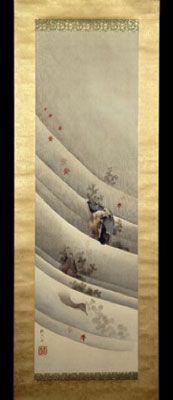
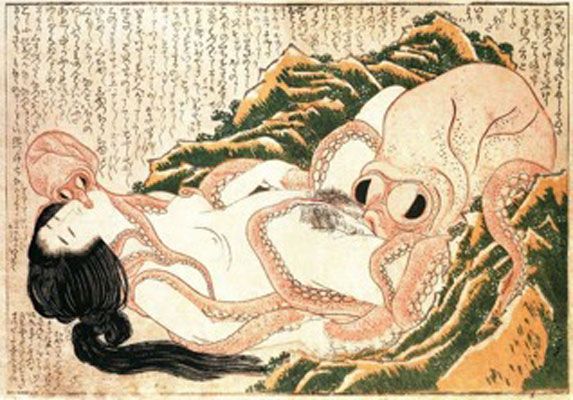
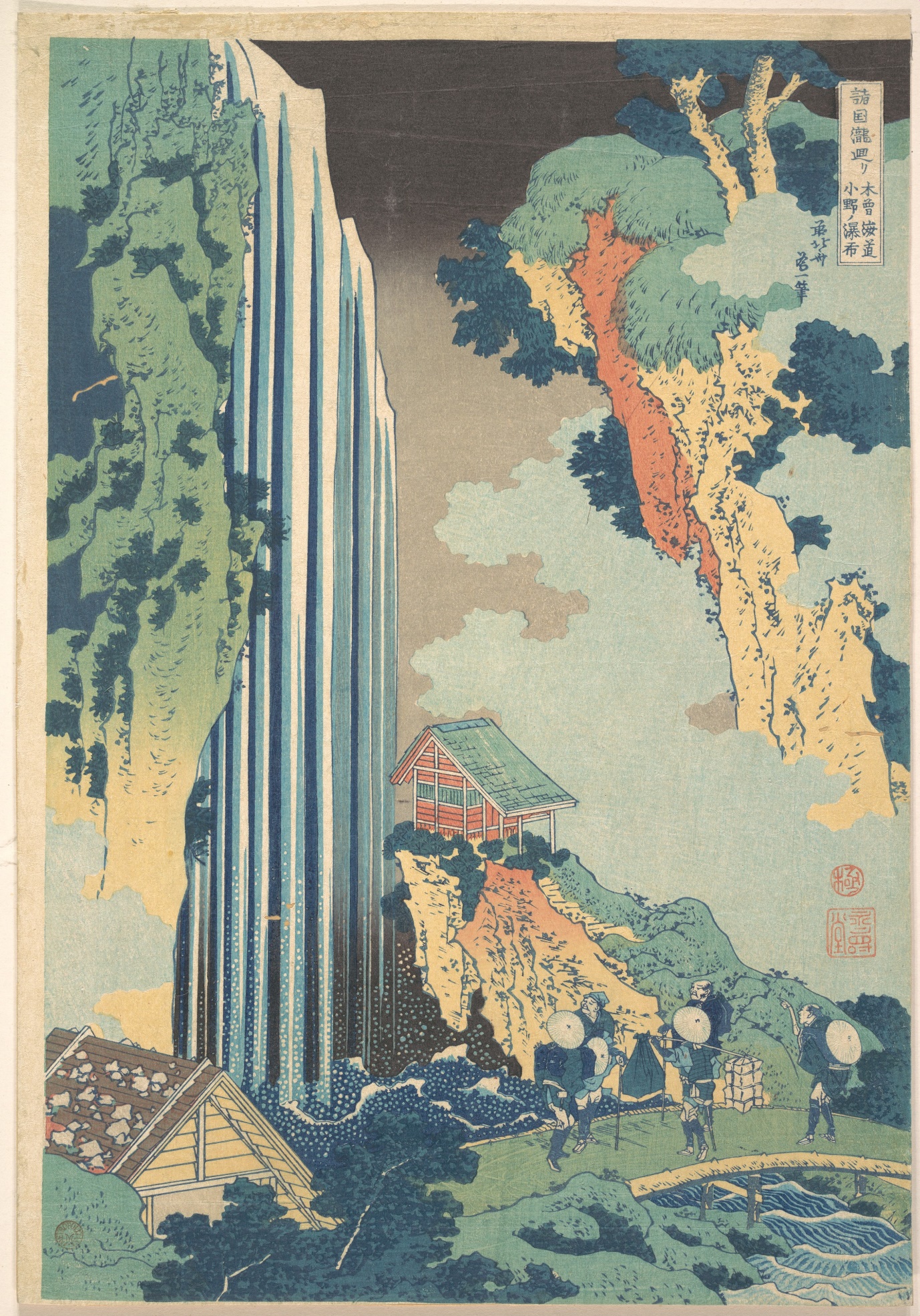
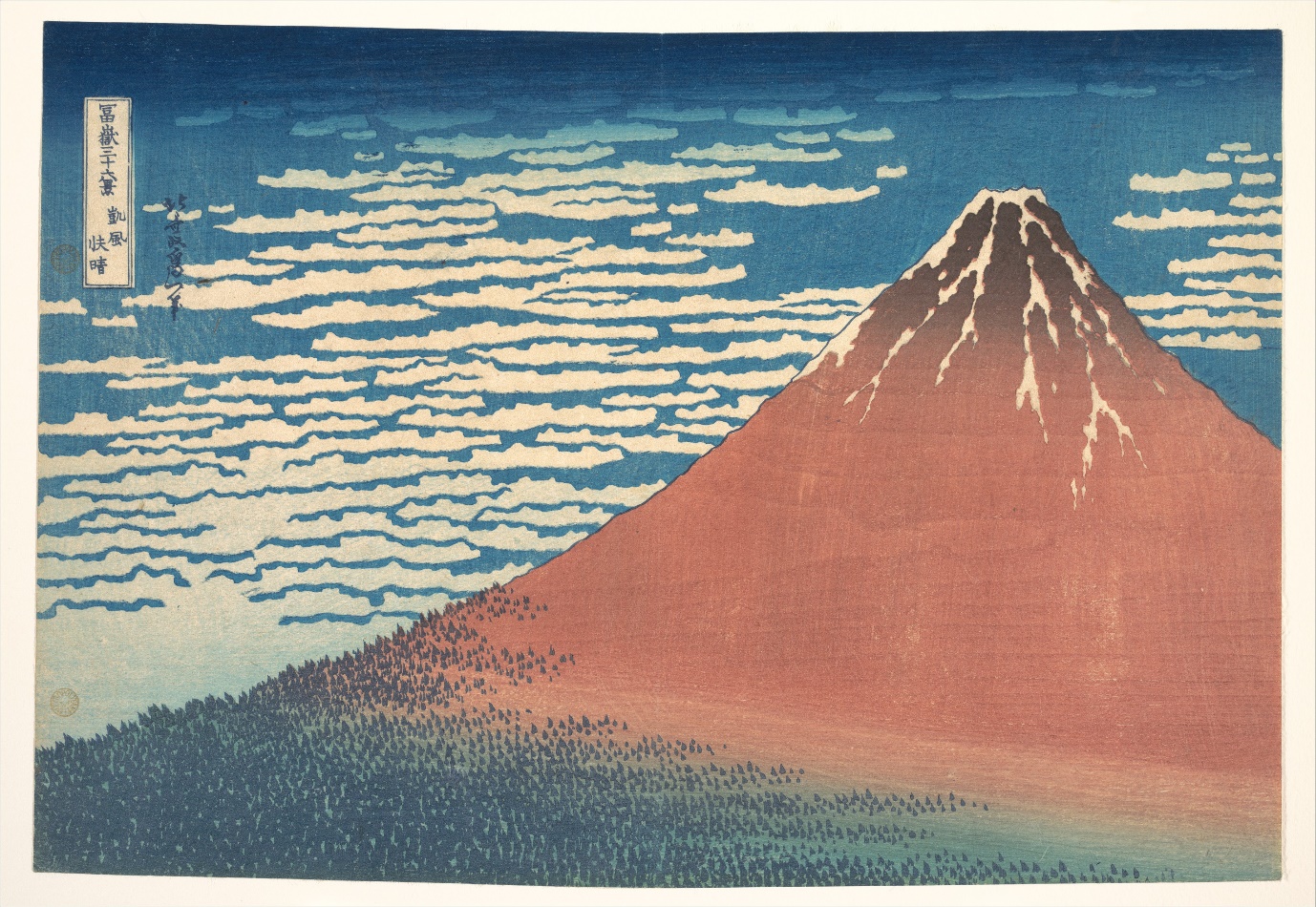
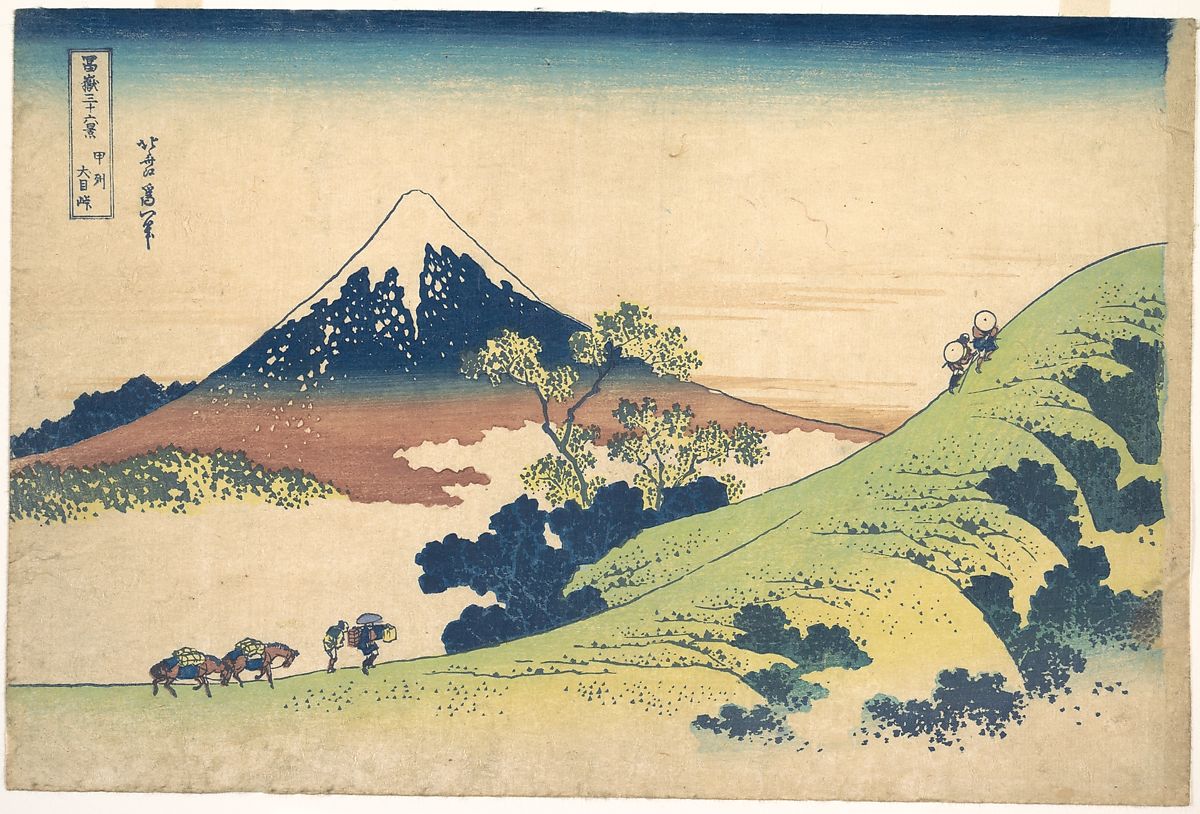
Work Cited For images
Vesco, Silvia. An Analysis of Some Illustrated Books by Katsushika Hokusai (1760-1849) in the Museum of Oriental Art in Venice.” Annali di Ca’Foscari (2020)